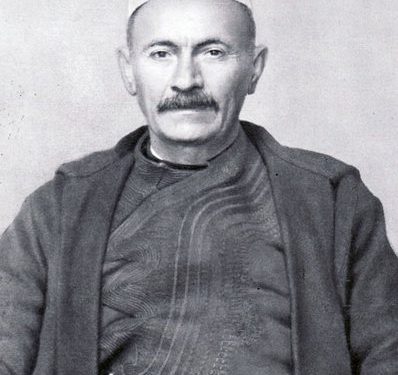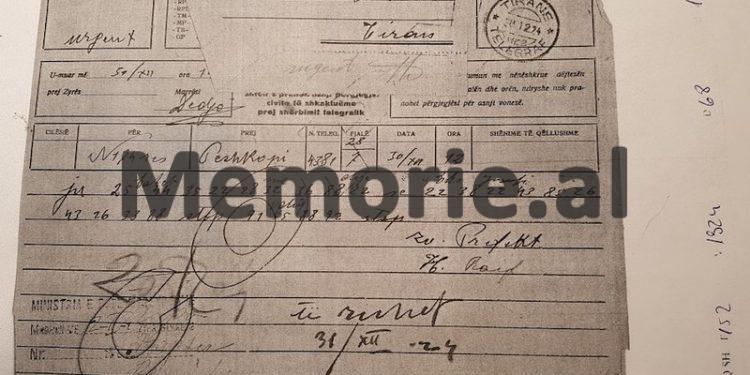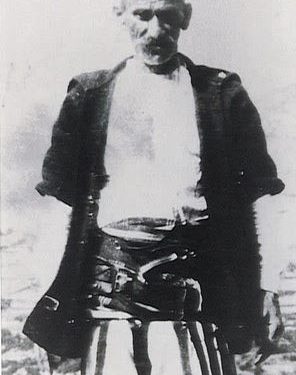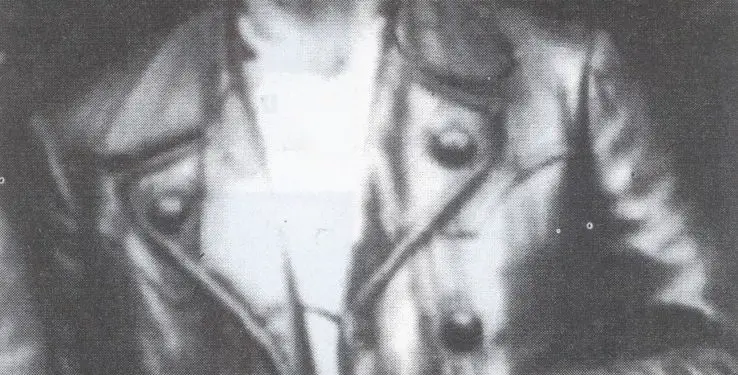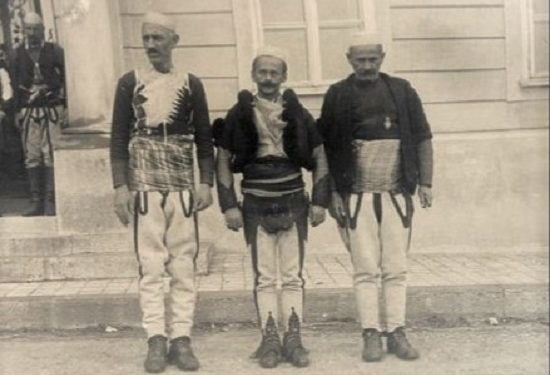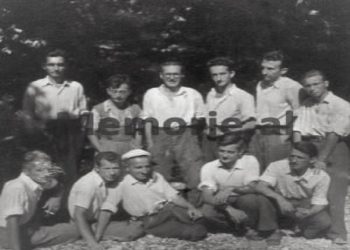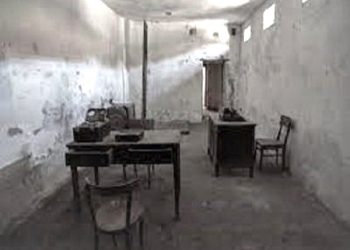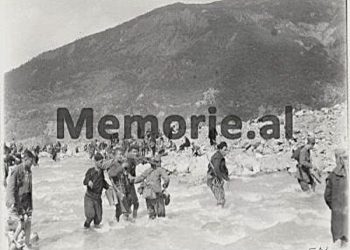Dashnor Kaloçi
Memorie.al publishes a rare document extracted from the Central State Archives in Tirana, which belongs to the date of December 31, 1924, where there is a telegram announcing the death of Elez Isuf Ndreu from the village of Slovo e Dibra, the popular prijsit otherwise known as the “General with the shajak”, who was put in charge of Dibrani and led the uprising and the armed resistance of the forces of that province and beyond in the north of Albania, in the war against the Turkish forces, as well as the Serbo-Montenegro forces that intervened from time to time the Albanian border in the north-eastern area of Albania. In the document in question, there is a telegram signed by the sub-prefect of Dibra at that time, which informs the Ministry of the Interior in Tirana about the death of Elez Isufi in the village of Slovo, after he was injured a few days ago in the outskirts of the city of Peshkopia in an effort with the forces of the former Minister of Internal Affairs, Ahmet Zogu, who were returning from Yugoslavia to Albania. Who was the “general with the shajak” who was put in charge of the Dibra insurgents in the wars for the overall protection of the Albanian lands in the north-east of the country and was then decorated by the Emperor of Austria-Hungary, Franz Joseph, with the high decoration, “Golden Cross of Officers”?!
98 years ago, on December 31, 1924, Elez Isuf Ndreu, one of the most popular leaders and leaders not only in the province of Dibra, but also in the entire North, passed away in his tower in the village of Slovo in Dibra. of Albania and beyond, who commanded the Dibra fighters in the battles for the protection of the territorial integrity of Albania from the invasions and attacks of the Serbo-Montenegro armies in the first two decades of the last century.
Elez Isuf Ndreu, or as he is otherwise known as “The General with the shajak”, was wounded just a few days ago (on December 25, 1924), somewhere on the outskirts of the city of Peshkopia where the military barracks were located, in an attempt with the forces of the former -The Minister of Internal Affairs, Ahmet Zogut, who was returning to Albania, after a stay of almost seven months in Yugoslavia at that time.
On the same day, the bullets that shot at the famous old man of Dibra, also killed his nephew, Suf Jalil, Elez Isuf’s right-hand man and also one of the most prominent fighters in all the battles that “the general with shajak”, since the day when he had thrown his rifle to his arms and had gone to the mountain as a sign of rebellion against the policy that was being followed by Turkey at that time and then against the Serbo-Montenegros.
The figure and name of Elez Isufi became known especially after 1917, when together with an Albanian delegation he was invited to Vienna by Emperor Franz Joseph, being honored by him with the high decoration “Golden Cross of Officers” ”, for the contribution he had made in the wars for the protection of the territorial integrity of Albania in the provinces and the north-eastern borders.
Elez Isuf Ndreu was a close friend and collaborator of a number of well-known names and patriots and politicians, such as: Islam Spahiu i Luma, Bajram Curri, Hasan Prishtina, Isa Boletini, Luigj Gurakuqi, Fan Noli, Mustafa Merlika Kruja, etc. who on December 21, 1921, asked him for help to come to Tirana with his forces and to remove by force of arms Ahmet Zogu and his supporters in the Parliament, in that event that is already known in the history of Albania as the “Dibrane Movement”.
Although at the end of that battle a certain peace was reached between Ahmet Zog and Elez Isufi (after the intervention of the British ambassador), who withdrew with his forces to the Dibra area, a deep gap of resentment remained between them. , which would also be seen at the end of December 1924, when Elez Isufi came out and fought with weapons against the forces of Ahmet Zog who entered the Albanian territory in the area of Dibra.
The death of Elez Isufi caused a great stir not only in the province of Dibra, but also in Tirana and beyond, as evidenced by this telegram dated December 31, 1924, which is published for the first time, where the vice prefect of Dibra , informs the Ministry of the Interior, that; “It should be noted that Elez Isufi died”.
And on the part of the Ministry of the Interior, the note “to be preserved” was put in that telegram. Regarding the death of Elez Isufi, the well-known writer, researcher and publicist, Xhaferr Martini, one of the most prominent researchers of the history of Elez Isufi who has written several books about him, said: “On the death of Elez Isufi, all of Dibra made an inn”!
After the murder of Elez Isufi, the leadership of the Ndreu tribe was taken by his son, Cen Elezi, and their tower in Slovakia of Dibra in the period of the Zog Monarchy and then it was also visited by foreigners, such as the British Margaret Hazlett, Harry Fultz, etc., or Rosse A. Lein, who in her work “Saddle Clock”, has written at length about the Tower of Dreams in Slovo de Dibra.
Cen Elezi and the other men of the Ndreu tribe, were engaged and made a great contribution during the period of the country’s occupation (1939-1944), all of whom were mobilized in the Anti-Fascist Movement and where their big tower in Slovakia of Dibra , became one of the main bases of resistance of the partisan and nationalist forces and for that fact, it was bombed by Italian aviation in 1943.
During this period of time (1939-1944), from this family of nationalists, Cen Elezi (son of Elez Isufi), with his seven sons, as well as Major General Dali Ndreu, (deputy) stood out for their great contribution. chief of the General Staff of the National Liberation Army commanded by Enver Hoxha), his wife, Liri Gega Ndreu (member of the Provisional Central Committee of the Albanian Communist Party), colonel Esat Ndreu, commander of the 18th Partisan Assault Brigade, etc.
For this contribution that this family made in the Anti-Fascist War, in December 1944, Cen Elezi was elected vice-president of the Presidency of the Democratic Front of Albania led by Enver Hoxha, but immediately after the end of the War, Cen Elezi and his entire family , would not agree with the policy that was being followed by Enver Hoxha and mainly the close friendship and submission to Yugoslavia of Marshal Josip Broz Tito, against whom Ndreta e Dibra had fought with weapons in hand for several decades and looked at them as centuries old enemies.
This caused the communist regime headed by Enver Hoxha to start the persecution and arrests of the Ndreu family, which forced Cen Elez and all his sons to go to the mountains and then escape from Albania.
From that time and afterwards, for almost 40 years in a row, the Ndreu family was hit and persecuted by the communist regime of Enver Hoxha, having a very tragic balance: 6 men shot, (a pregnant woman), 20 political prisoners, 12 men escaped from Albania to escape persecution, 32 people died in prisons and internment camps as well as 55 families with (hundreds of members) interned from 1947 to 1990?
This became the main reason that during the communist regime of Enver Hoxha, Elez Isuf Ndreu was never granted the high title “Hero of the People” and his grave was almost lost in Slovo di Dibra, as his descendants were all in prisons and exiles.
Only from the end of the 80s, with the personal initiative of the famous artist and rhapsodist, Hazis Ndreu, (the eldest son of this family) and his son, Nesim Ndreu, his remains were exhumed by them and secretly placed somewhere in The “Martyrs’ Cemetery” of Peshkopia, to be recovered in the early 90s and reburied with great honors in the monumental cemetery of that family in the village of Slovo di Dibra. Memorie.al




